Comparison and selection of electric vehicle propulsion system
22. Február, 2012, Autor článku: Noge Filip, Elektrotechnika, Študentské práce
Ročník 5, číslo 2  Pridať príspevok
Pridať príspevok
![]() The work compares and evaluates various kinds of electric propulsion for vehicles. At the beginning we set the conditions for comparison. We are interested in output parameters such as acceleration, top speed and gear ratios. Finally, the best system is chosen with an explanation of why this is the best.
The work compares and evaluates various kinds of electric propulsion for vehicles. At the beginning we set the conditions for comparison. We are interested in output parameters such as acceleration, top speed and gear ratios. Finally, the best system is chosen with an explanation of why this is the best.
1. Introduction – Electro mobility
Low efficiency, limited supply of energy sources, mechanical limits are the main problems related to transportation and automotive industry. Mankind should solve this problem with combustion engine. There are already several concepts to replace the combustion engines and most of them directed to electric vehicles, whether by a plug-in full electric vehicle or a vehicle with a fuel cell. Presently, we still did not replace combustion engines by electro mobility because we have enough fuel and we can not properly store electricity in batteries, but it becomes more and more recent. Therefore, I have decided to choose and propose full electric vehicle.
2. Traction propulsion
The goal was to create the vehicle propulsion, which we comply with the following parameters in order of priority: acceleration, maximum speed, as low weight. The task is to select a suitable motor and project propulsion system. The system has been solved under following circumstances which are shown in the table 2.1.
Tab. 2.1. Circumstances for calculations
| Circumstances for calculations | |||
|---|---|---|---|
| gravitational acceleration | g | 9,81 | m.s-2 |
| air density | ρo | 1,22 | kg.m-3 |
| air resistance coefficient | cx | 0,3 | |
| rolling resistance coefficient | fv | 0,01 | |
| coefficient of rotational mass inertia | δ | 0,5 | |
| frontal area of vehicle | S | 1,2 | m2 |
| vehicle weight | m | 1200 | kg |
| wheel dynamic radius | rd | 0,3 | m |
Tab. 2.2. Main equations and units.
| Basic equation | Units | Used equation | Units |
|---|---|---|---|
| [P]=W [M]=Nm [n]=s-1 |
[P]=kW [M]=Nm [n]=ot/min |
||
| [F]=N [M]=Nm [rd]=m |
[F]=N [M]=Nm [rd]=m |
||
| [v]=ms-1 [rd]=m [n]=s-1 |
[v]=km/h [rd]=m [n]=ot/min |
The next chapter contains three best electro-motors in matter of performance in comparison to many other available motors.
3. EVO 240
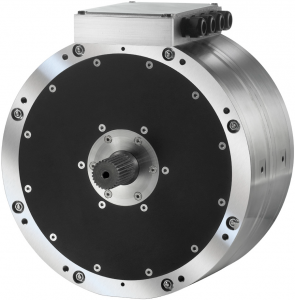
Fig. 3.1 Image of the EVO 240 electric motor
3.1 Parameters of the EVO 240
Tab. 3.1. EVO 240 specifications
| MOTOR | |
|---|---|
| Dimensions | L 222 D 400 mm |
| Maximal peak torque | 800 Nm |
| Maximal peak power | 335 kW |
| Maximal nominal torque | 440 Nm |
| Maximal nominal power | 150 kW |
| Maximal RPMs | 5000 ot/min |
| Weight | 80 kg |
| Maximal efficiency | 96,5% |
| INVERTOR | |
| Dimensions | 643x340x166 mm |
| Voltage range | 300-720 V |
| Maximal current | 343 A |
| Weight | 30 kg |
3.2 Characteristics of the EVO 240
Tab. 3.2. EVO 240 performance curves table
| torque and power vs. RPMs | ||||
|---|---|---|---|---|
| Pnom | Mnom | Pmax | Mmax | n |
| 0,00 | 440,00 | 0,00 | 800,00 | 0 |
| 22,51 | 430,00 | 41,89 | 800,00 | 500 |
| 43,98 | 420,00 | 83,78 | 800,00 | 1000 |
| 54,32 | 415,00 | 104,72 | 800,00 | 1250 |
| 64,40 | 410,00 | 125,66 | 800,00 | 1500 |
| 83,78 | 400,00 | 167,55 | 800,00 | 2000 |
| 102,10 | 390,00 | 209,44 | 800,00 | 2500 |
| 119,38 | 380,00 | 251,33 | 800,00 | 3000 |
| 135,61 | 370,00 | 293,22 | 800,00 | 3500 |
| 150,80 | 360,00 | 335,10 | 800,00 | 4000 |
| 150,80 | 320,00 | 341,65 | 725,00 | 4500 |
| 146,61 | 280,00 | 340,34 | 650,00 | 5000 |
where: Mmax is peak torque [Nm], Pmax is peak power [kW], Mnom is nominal torque [Nm], Pnom is nominal power [kW], n is RPMs [1/min]
Tab. 3.3. Table of total gear ratios for EVO 240
| Total gear ratios | ic1 | 4 |
|---|---|---|
| ic2 | 3,375 | |
| ic3 | 2,75 | |
| ic4 | 2,125 | |
| ic5 | 1,5 |
Where icx is the total gear ratio of gear with corresponding index. The vehicle is approximately able (with this motor and gearing) to achieve an average acceleration 9,78 ms-2, which means acceleration from 0 to 100 km/h in 2,84 s on the first gear.
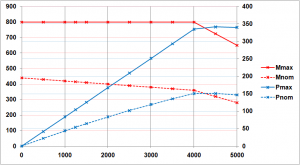
Fig. 3.2. EVO 240 performance curves
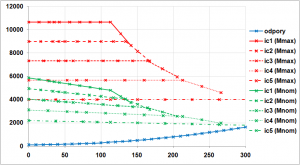
Fig. 3.3. EVO 240 propulsion force vs. RPMs chart
3.3 Appreciation, advantages and disadvantages of the EVO 240
This motor with its properties are on the leading positions in comparison with other motors, and although it too expensive it has very good torque to price ratio as well as power to price ratio and I assume that in terms of parameters is the most appropriate candidate from analyzed motors.The advantages of this motor are its small size, light weight, excellent parameters and performance curves, and also that it is supplied with an inverter designed exactly for this motor.
Disadvantages are high cost and complicated availability. An interesting fact is the starting torque during short time current overload, which the other motors datasheets do not contain. Its value is 1200 Nm for 18 seconds, so we could use this as a benefit in our application. (peak torque is the motor able to withstand for 60 seconds).
3.4 The cooling requirements of the EVO 240
The motor requires liquid cooling and its structure includes cooling system. Only the pipe connections with coolant and adequate volumetric flow need to be provided for the system startup. The maximum value of volumetric flow rate could not exceed 12 l / min. Mixture of water with ethylene glycol (antifreeze standard component of coolant in the automotive industry) in a 1:1 ratio is recommended as the cooling medium.
4. UQM 200
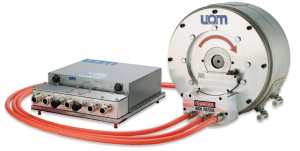
Fig. 4.1 Image of the UQM 200 electric motor
4.1 Parameters of the UQM 200
Tab. 4.1. UQM 200 specifications
| MOTOR | |
|---|---|
| Dimensions | L 241 D 411 mm |
| Maximal peak torque | 900 Nm |
| Maximal peak power | 200 kW |
| Maximal nominal torque | 450 Nm |
| Maximal nominal power | 115 kW |
| Maximal RPMs | 5500 ot/min |
| Weight | 95 kg |
| Maximal efficiency | 94% |
| INVERTOR | |
| Dimensions | 380x365x119 mm |
| Voltage range | 240 – 440 V |
| Maximal current | 600 A |
| Weight | 15,9 kg |
4.2 Characteristics of the UQM 200
Tab. 4.2. UQM 200 performance curves table
| torque and power vs. RPMs | ||||
|---|---|---|---|---|
| Pnom | Mnom | Pmax | Mmax | n |
| 0 | 455 | 0 | 900 | 0 |
| 24 | 455 | 48 | 900 | 500 |
| 48 | 455 | 96 | 900 | 1000 |
| 54 | 440 | 120 | 900 | 1250 |
| 66 | 425 | 132 | 860 | 1500 |
| 82 | 400 | 160 | 760 | 2000 |
| 98 | 375 | 176 | 680 | 2500 |
| 115 | 360 | 190 | 600 | 3000 |
| 115 | 320 | 200 | 550 | 3500 |
| 115 | 270 | 200 | 480 | 4000 |
| 108 | 240 | 200 | 440 | 4500 |
| 96 | 185 | 200 | 380 | 5000 |
where: Mmax is peak torque [Nm], Pmax is peak power [kW], Mnom is nominal torque [Nm], Pnom is nominal power [kW], n is RPMs [1/min]
Tab. 4.3. Table of total gear ratios for UQM 200
| Total gear ratios | ic1 | 4 |
|---|---|---|
| ic2 | 3,75 | |
| ic3 | 3 | |
| ic4 | 2,25 | |
| ic5 | 1,5 |
Where icx is the total gear ratio of gear with corresponding index. The vehicle is approximately able (with this motor and gearing) to achieve an average acceleration 9,84 ms-2, which means acceleration from 0 to 100 km/h in 2,82 s on the first gear.
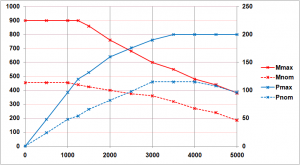
Fig. 4.2. UQM 200 performance curves
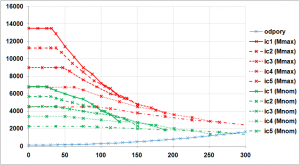
Fig. 4.3. UQM 200 propulsion force vs. RPMs chart
4.3 Appreciation, advantages and disadvantages of the UQM 200
This motor has the highest value of torque in comparison to others considered, this means it has the highest value of torque, and although it is quite expensive it has a very good torque to price ratio as well as power to price ratio and I assume that in terms of parameters is the most appropriate candidate from analyzed motors.
The advantages of this motor are its small size, light weight, excellent parameters and performance curves, and also that it is supplied with an inverter designed exactly for this motor. Disadvantages are high cost and complicated availability. Possibility of short time current overload and also the time period that the system could withstand are unknown.
4.4 The cooling requirements of UQM 200
The motor requires liquid cooling and its construction includes cooling system. Only the pipe connections with coolant and adequate volumetric flow need to be provided for the system startup. The maximum value of volumetric flow rate should not exceed 7,5 l / min and maximum value of pressure in cooling system should not exceed 0,7 bar. Mixture of water with ethylene glycol (antifreeze standard component of coolant in the automotive industry) in a 1:1 ratio is recommended as the cooling medium.
5. Symetron P-200
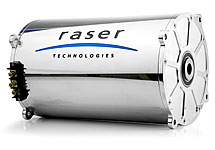
Fig. 5.1 Image of the Symetron P-200 electric motor
5.1 Parameters of Symetron P-200
Tab. 5.1. Symetron P-200 specifications
| MOTOR | |
|---|---|
| Dimensions | L 457 D 279 mm |
| Maximal peak torque | 415 Nm |
| Maximal peak power | 200 kW |
| Maximal nominal torque | 207 Nm |
| Maximal nominal power | 100 kW |
| Maximal RPMs | 5500 ot/min |
| Weight | 112 kg |
| Maximal efficiency | 93% |
| INVERTOR | |
| Dimensions | 224x330x358 mm |
| Voltage range | 500 – 700 V |
| Maximal current | ? A |
| Weight | 36 kg |
5.2 Characteristics of the Symetron P-200
Tab. 5.2. Symetron P-200 performance curves table
| torque and power vs. RPMs | ||||
|---|---|---|---|---|
| Pnom | Mnom | Pmax | Mmax | n |
| 0,00 | 207,00 | 0,00 | 415,00 | 0 |
| 10,84 | 207,00 | 21,73 | 415,00 | 500 |
| 21,68 | 207,00 | 43,46 | 415,00 | 1000 |
| 32,52 | 207,00 | 65,19 | 415,00 | 1500 |
| 43,35 | 207,00 | 86,92 | 415,00 | 2000 |
| 54,19 | 207,00 | 108,65 | 415,00 | 2500 |
| 65,03 | 207,00 | 130,38 | 415,00 | 3000 |
| 75,87 | 207,00 | 152,11 | 415,00 | 3500 |
| 86,71 | 207,00 | 173,83 | 415,00 | 4000 |
| 97,55 | 207,00 | 195,56 | 415,00 | 4500 |
| 97,91 | 187,00 | 198,97 | 380,00 | 5000 |
| 97,91 | 170,00 | 201,59 | 350,00 | 5500 |
| 97,39 | 155,00 | 201,06 | 320,00 | 6000 |
| 95,29 | 140,00 | 199,44 | 293,00 | 6500 |
| 93,10 | 127,00 | 197,92 | 270,00 | 7000 |
| 93,46 | 119,00 | 196,35 | 250,00 | 7500 |
| 92,15 | 110,00 | 196,87 | 235,00 | 8000 |
| 93,46 | 105,00 | 195,83 | 220,00 | 8500 |
| 94,25 | 100,00 | 197,92 | 210,00 | 9000 |
| 95,50 | 96,00 | 201,95 | 203,00 | 9500 |
| 99,48 | 95,00 | 204,20 | 195,00 | 10000 |
where: Mmax is peak torque [Nm], Pmax is peak power [kW], Mnom is nominal torque [Nm], Pnom is nominal power [kW], n is RPMs [1/min]
Tab. 5.3. Table of total gear ratios for Symetron P-200
| Total gear ratios | ic1 | 9 |
|---|---|---|
| ic2 | 7,375 | |
| ic3 | 5,75 | |
| ic4 | 4,125 | |
| ic5 | 2,5 |
Where icx is the total gear ratio of gear with corresponding index. The vehicle is approximately able (with this motor and gearing) to achieve an average acceleration 9,44 ms-2, which means acceleration from 0 to 100 km/h in 2,94 s on the first gear.
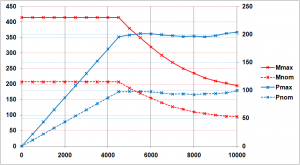
Fig. 5.2. Symetron P-200 performance curves
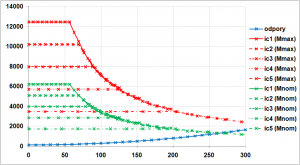
Fig. 5.3. Symetron P-200 propulsion force vs. RPMs chart
5.3 Appreciation, advantages and disadvantages of the Symetron P-200
The motor including its parameters is above average but not apparently excellent, which is not a problem if they are sufficient, so this should be well considered. Its advantage is the relatively high power and broadband RPMs. The main disadvantages are high weight, a high supply voltage and relatively large dimensions. Torque value is lower, but still sufficient.
5.4 The cooling requirements of the Symetron P-200
Cooling is provided by fluid coolant that is used in most of motors. Details of cooling are not known. Mixture of water with ethylene glycol (antifreeze standard component of coolant in the automotive industry) in a 1:1 ratio is recommended as the cooling medium.
6. Conclusion
First of all let’s look at gearbox. We can say, that it is necessary to implement gearbox, because it provides the opportunity to achieve excellent acceleration and high value of maximal speed, so that is the reason why we do not want to use permanent ratio or without any ratio conception. There is one solution that could be comparable to conception with gearbox. It is conception with two motors without gearbox (or with permanent ratio). This conception has major problem with power consumption. It means that two motors consume twice value of energy. This solution requires more batteries and cause more weight. That is the reason why we incorporate the gearbox.
Now let’s look at the motor choice. From all the candidates we choose the EVO 240 as the best alternative. It has great performance curves and it is relatively lightweight. There might be a question, if the gearbox is strong enough to transfer high torque that the motor provides. We should not forget that the calculations were provided not considering the losses (efficiency). This means that the real result value will be lower, but to compare the systems the calculations are appropriate.
References
- http://www.evo-electric.com/products/
- http://www.uqm.com/propulsion_specs.php
- http://www.raserev.com/category/motors-and-drives/motors
Coauthor of this paper is Ing. Vladimír Staňák, Katedra mechaniky, Fakulta elektrotechniky a informatiky, Slovenská technická univerzita, 812 19 Bratislava, Slovenská republika
Práca bola prezentovaná na Študentskej vedeckej a odbornej činnosti (ŠVOČ 2011) v sekcii Aplikovaná mechanika II a získala Cenu dekana, ISBN 978-80-227-3508-7

